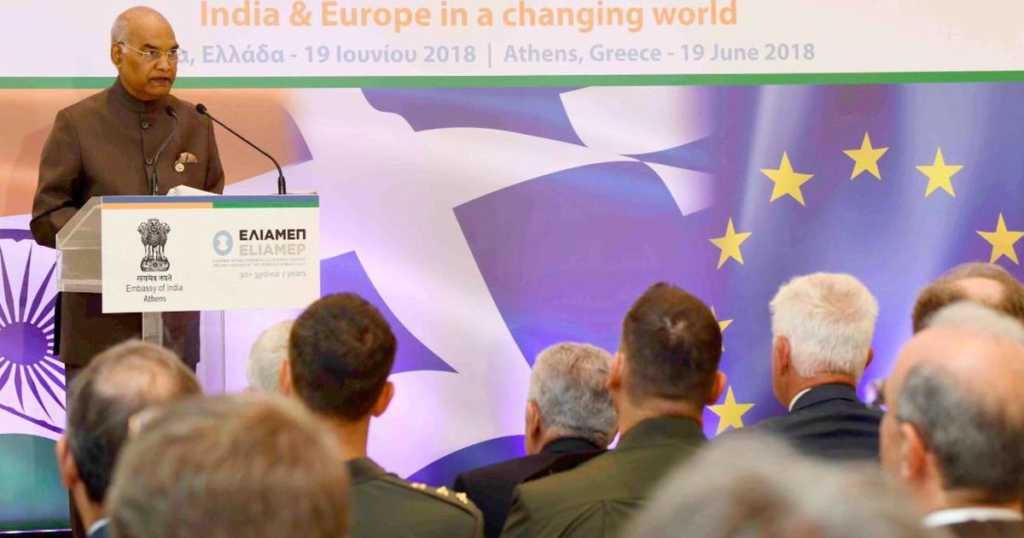If India continues to grow at this pace, it will become a $5 trillion economy by 2025. The country added $337 billion in its Gross Domestic Product (GDP) between 2016 and 2017. President Ram Nath Kovind iterated the same fact while addressing an Indian diaspora at the Greek capital of Athens on Monday. He said “We are working towards making India a $5 trillion economy and the world’s third-largest consumer market by 2025. According to the World Bank and IMF, our growth rate is going to be high.” The statement by the President was not just castled in the air, but was a well-calculated projection. As of now, GDP of India is almost 2.7 trillion, and if the country keeps adding $337 billion every year it will easily reach $5 trillion by 2025. The addition of $337 billion is more than the $323-billion added by Germany and France combined and more than that of 158 countries including Pakistan and Bangladesh.
In the last quarter of the fiscal year, the GDP growth of the country was at 7.7 percent; now the main challenge for India is to make that figure reach double digit growth. Achieving a double-digit GDP growth has long been the dream of the country. China, which is today the second largest economy in the world with a GDP of almost $11 trillion, could reach there because it has had on an average double-digit GDP growth for almost two decades. A few days before earlier while speaking at the Niti Aayog‘s fourth meeting of Governing Council, PM Modi stressed that “the world expects India to become a $5 trillion economy soon, while the only challenge now is to take this growth rate to double digits, for which many more steps have to be taken.”
Growth in India's share in world GDP increased from 2.43% in 2013 to 3.08% in 2017 under Modi government. #SaafNiyatSahiVikas pic.twitter.com/2OMKxJd58Z
— BJP (@BJP4India) June 21, 2018
India’s share in world GDP increased from 2.43 percent in 2013 to 3.08 percent in 2017. This was due to the fact the countries which were the major contributors to world GDP witnessed a stagnation or slowdown in their economic growth rate. China, which is the largest contributor to world GDP growth since the last decade, saw a slowdown in its economy in recent years. North America and Western Europe, which are the other largest contributors to world GDP growth, experienced stagnation in their economies. On the other hand, India maintained its growth trajectory despite a slowdown around the world, and now it is aspiring for a double-digit economic growth. As of now, the country has the tag of the fastest-growing major economy in the world and if it retains the tag for the next few years it will reach the target of becoming a $5 trillion economy before 2025.
Indian economic growth had slowed down in the last years of UPA’s rule. After coming to power, the Modi government brought structural and spontaneous reforms for the growth of the economy. PM Modi took some bold reforms like demonetization, GST, IBC to improve business conditions in the country. The combined impact of demonetization and GST made the economy more formalised and increased the number of taxpayers exponentially. The impact of these reforms is visible in the improvement of ease of doing business coupled with a healthy economic growth rate. The IBC law made India a truly capitalist state, because before that the country had “capitalism without exit” system in which even loss-making companies could not be dissolved easily due to socialist era laws. Foreign direct investment is at an all-time high in the country because foreign investors are bullish about the Indian market since Modi came to power. Therefore, if India continues with reforms and the initiatives like Make in India succeed, it will be one of the most formidable economic powers in the upcoming decade.
